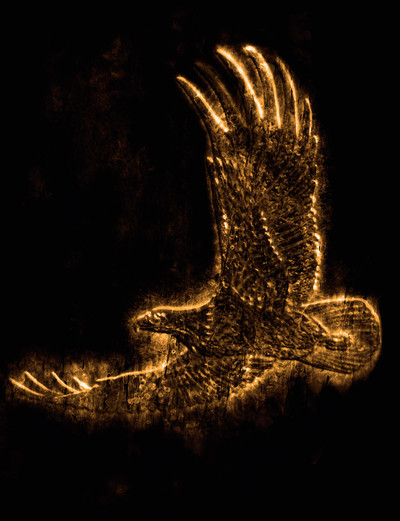The rise and fall of the Hollywood Hills.
By Matt Tyrnauer
Illustration by François Berthoud
The rise and fall of the Hollywood Hills.

Last year I moved back to my hometown, Los Angeles, and into an historic building in Whitley Heights, at the base of one of the Hollywood Hills. The first of the movie star colonies, Whitley Heights was developed in 1918, by Hobart J Whitley, a land speculator sometimes called ‘The Father of Hollywood’. Whitley and his wife Gigi dreamed up the name Hollywood on their honeymoon and soon after established the Hollywood Hotel. The founder of 130 towns across the western United States, Whitley was inspired by southern Italian hill towns along the Amalfi Coast with their curving roads, houses cut into the landscape and walled gardens.
The Hill, as local residents call Whitley Heights, became home to Charlie Chaplin, Harold Lloyd, WC Fields, Tyrone Power, Carole Lombard, Rosalind Russell and Gloria Swanson, among many others. The building where I live – one of the original courtyard villas in LA, a mash-up of Seville and Tuscany – was built for Cecil B DeMille to house actors coming west from New York.
Although Whitley Heights is almost exactly the geographic centre of Los Angeles, even natives of the city have never heard of it. This is one of the bizarre charms of Los Angeles, a city which habitually ignores its history, a community based on immigrants coming to reinvent themselves and forget their pasts.
Before and during World War II, as hundreds of thousands were drawn to Southern California by the booming local entertainment economy, as well as real estate, oil, aerospace and war operations, Hollywood was at the epicentre, and Whitley’s hill loomed over it all. The movers and shakers of the city below ascended to their tile-roofed villas and watched over the city from among the citrus groves. Most of the movie studios were actually located in Hollywood then, or nearby. Hollywood Boulevard was the very model of a 20th-century central business district, an elongated strip catering to automobile traffic, lined with smart businesses, restaurants, bars and movie palaces with a streetcar running down the centre.
When the war ended and development resumed, the decline of Hollywood began. The first harbinger of doom came in late 1948 when construction began on the Hollywood Freeway, now referred to by locals as ‘the 101’. Hundreds of homes – many Craftsman and Victorian gems – were condemned. Streets were amputated, bisected, blocked off and obliterated. A trench, 50 feet deep and 100 feet across, was dug; a violent cut on the diagonal across the street grid of the city basin.
Of all the wrecked neighbourhoods in Los Angeles, none suffered more than Whitley Heights. It was bisected at its lowest point, a small valley between the two hills. The finest homes were in the valley, including those of Valentino, Lloyd and Chaplin. The Hollywood Freeway was inevitable and unstoppable, the product of the Federal Highway Act, the grandest federal project in the second half of the 20th century.
The effect of the Hollywood Freeway on Los Angeles was disastrous. The decline of Hollywood was almost immediate. Solid neighbourhoods laid open by the freeway descended into blight. Core residents of Hollywood relocated to the Westside and the newly opened Valley. Hollywood Boulevard’s businesses started to shut. The NBC Studios, once at Sunset and Vine, moved to Burbank. Tourist traps took over the storefronts; indigents, drug dealers and hookers seemed to rival the number of bewildered tourists. My street became known as Murder Alley. It’s not far from what was known as Crack Alley. Selma Avenue, near the YMCA, was called Vaseline Alley.
Flash forward to the late 1990s, when LA’s economy recovered from the recession and race riots of the early 1990s. Smog was finally under control, and real estate prices had climbed, making a house in the hills desirable again. The crime rate in Hollywood began to decline, and Crack and Murder Alleys became known by their traditional names. Today people don’t remember where they were.
Whitley Heights now flourishes, even with the Freeway. The part to the west of the freeway is larger and more cohesive, filled with walled gardens and carefully restored houses. Hobart J Whitley might even recognise it as what he envisioned a century ago.
Now gaining traction is a plan to cover the Hollywood Freeway with a park, which would knit together the old street grid, ‘capping’ the cut of the freeway with acres of greenway and recreational facilities. Eric Garcetti, the new Los Angeles mayor, is supporting the effort, called the Hollywood Central Park. In the next few months, feasibility studies will start, and community groups are rallying locals. And Hollywood may be restored to a semblance of what existed before it became a guinea pig for the Highway Act which caused one of the most beautiful places in the world to became a very famous but almost unliveable urban catastrophe.